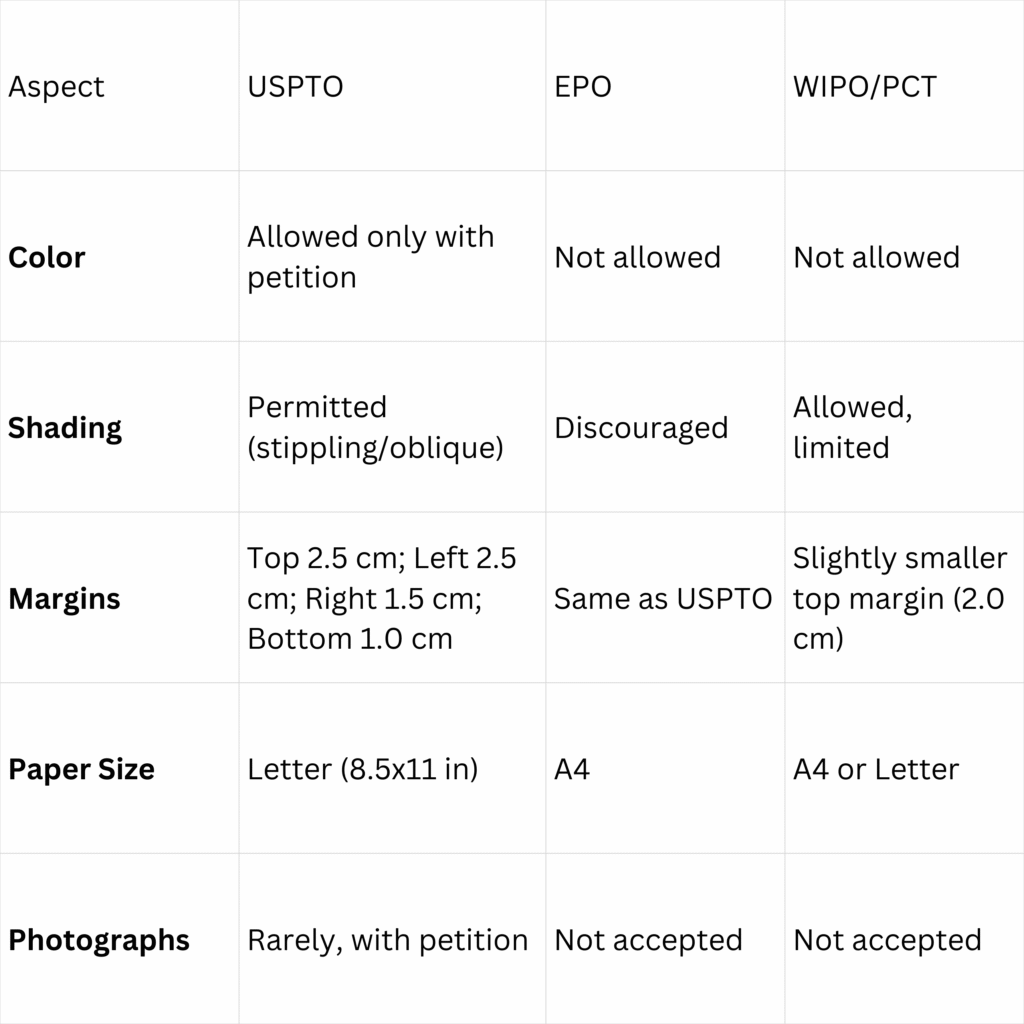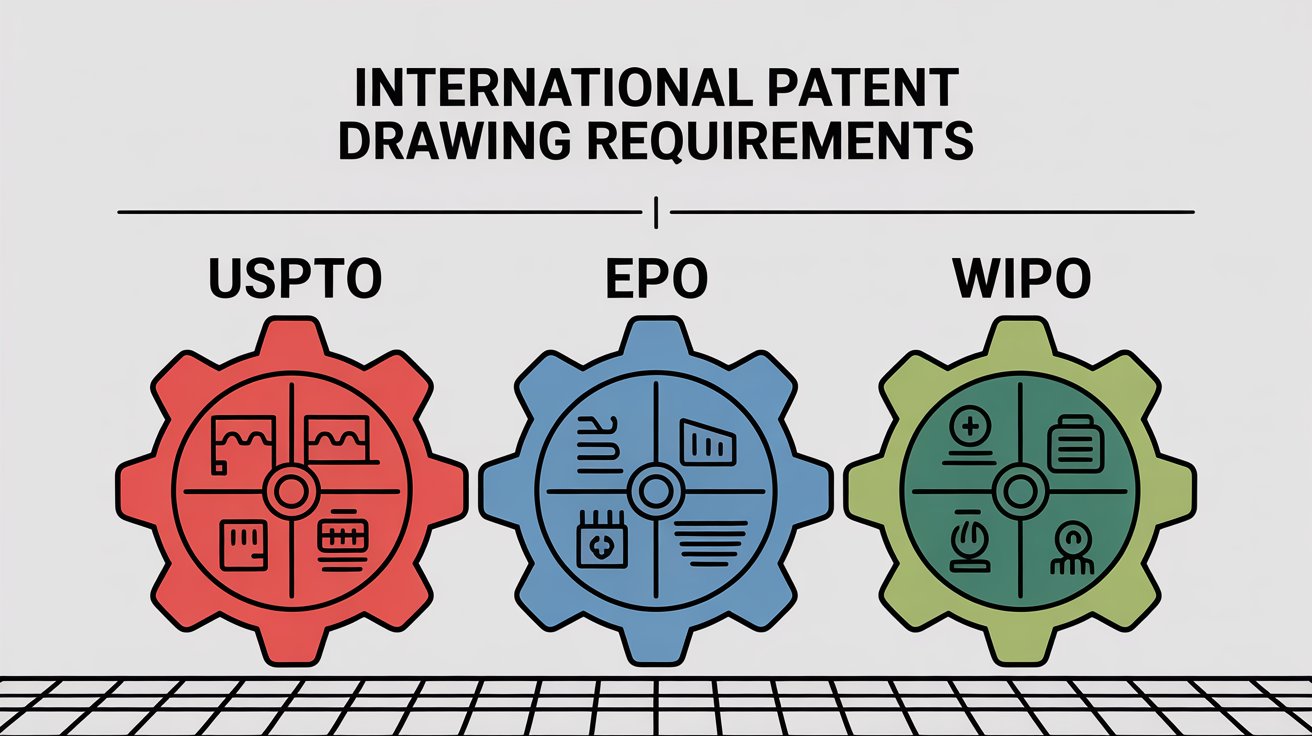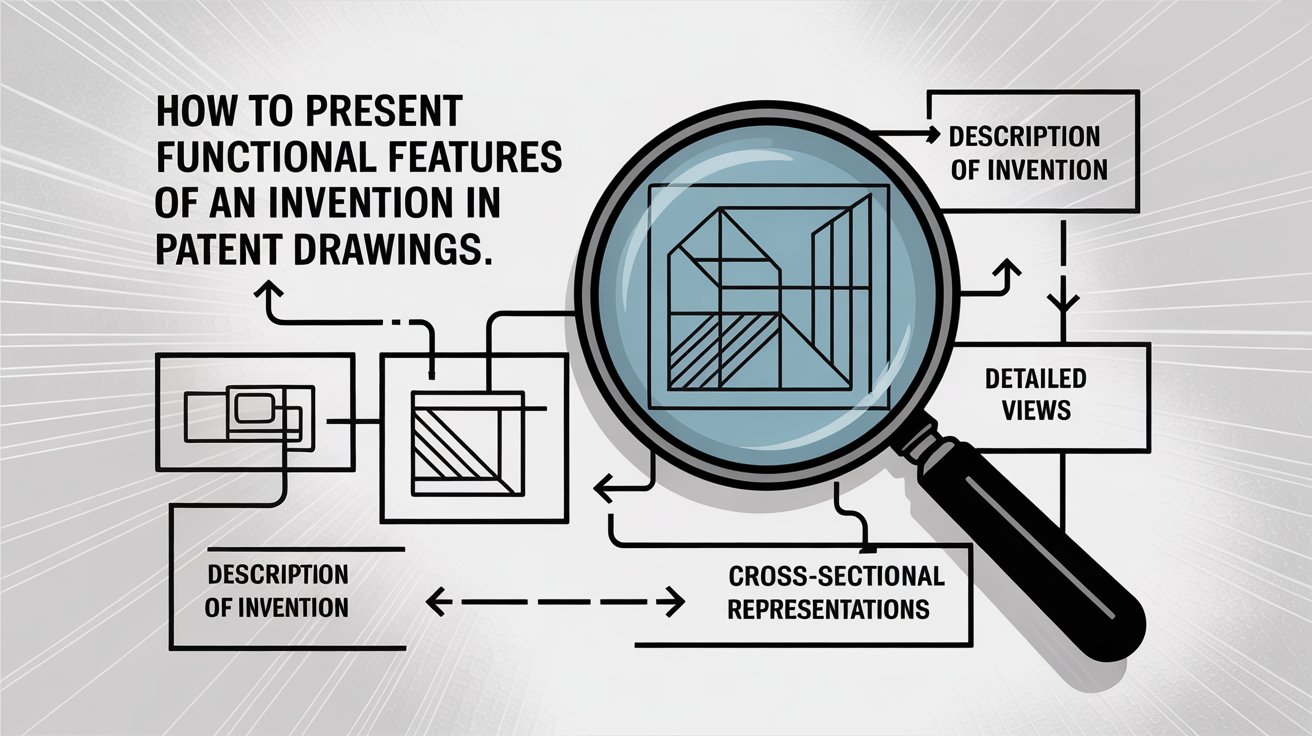When filing patents internationally, one of the most overlooked yet critical aspects is patent drawings. While inventors and businesses usually focus on claims and descriptions, the accuracy and compliance of drawings can make or break an application. The challenge is that international patent drawings don’t follow a single standard—requirements differ between the USPTO (United States Patent and Trademark Office), EPO (European Patent Office), and WIPO (World Intellectual Property Organization) under the PCT system.
This blog unpacks the key differences, similarities, and best practices to help you prepare compliant, universally accepted illustrations.
Why Global Standards Differ
Patent drawings exist to visually explain inventions. However, each jurisdiction has evolved its own preferences:
- USPTO emphasizes clarity and enforceability during litigation.
- EPO focuses on uniformity and avoiding interpretational ambiguity across multiple European languages.
- WIPO/PCT sets baseline rules for international applications but leaves room for regional adaptation.
These differences stem from legal traditions, linguistic diversity, and administrative practices. Understanding them ensures smoother filing and reduces office actions.
USPTO Rules
The USPTO patent drawings guidelines are among the most detailed worldwide. Key highlights:
Line Thickness
- Lines must be uniform, dark, and sufficiently thick to reproduce clearly.
- Fine lines are discouraged; broken or dotted lines may be used only for unclaimed features.
Margins
- Top: 2.5 cm
- Left side: 2.5 cm
- Right side: 1.5 cm
- Bottom: 1.0 cm
These margins are strictly enforced for proper scanning and reproduction.
Shading
- Shading is allowed to show depth, contour, or surface texture.
- USPTO permits oblique or stippled shading but requires consistency.
- Color drawings are only accepted in exceptional cases with a petition.
Related Resource: USPTO Drawing Requirements
EPO Standards
The EPO illustration rules have some of the strictest limitations compared to USPTO.
Restrictions on Color
- Black and white drawings only—no exceptions.
- Gray tones or photographs are typically not accepted.
Shading Rules
- Shading is discouraged unless absolutely necessary.
- Use simple lines instead of stippling or oblique shading.
Margins & Formatting
- Top: 2.5 cm
- Left: 2.5 cm
- Right: 1.5 cm
- Bottom: 1.0 cm
- Page size: A4 preferred.
The EPO’s emphasis is on clarity and reproducibility across multiple European states.
Reference: EPO Guidelines for Drawings
WIPO/PCT Requirements
When filing under the Patent Cooperation Treaty (PCT), applicants must follow WIPO drawing rules. These set a baseline for harmonization across multiple jurisdictions.
Key Requirements
- Line drawings only, in black ink.
- No color, grayscale, or photographs (unless specifically allowed).
- Minimum margins:
- Top: 2.0 cm
- Left: 2.5 cm
- Right: 1.5 cm
- Bottom: 1.0 cm
- Shading allowed but must not obscure clarity.
Purpose
WIPO’s requirements aim to standardize international filings, but once the application enters the national phase, local rules (USPTO, EPO, JPO, etc.) still apply.
Reference: WIPO PCT Guidelines
Comparative Table: USPTO vs EPO vs WIPO

How to Prepare Universal Drawings
Given these differences, how can inventors or businesses prepare universal drawings that meet most jurisdictions?
1. Stick to Black & White
Always default to line drawings in black ink—this ensures maximum compliance worldwide.
2. Avoid Over-Shading
While shading is acceptable in USPTO, it can cause objections in EPO. Use minimal shading unless absolutely necessary.
3. Use Correct Margins & Page Size
Format drawings for A4 size with standard margins. This ensures adaptability across USPTO, EPO, and PCT filings.
4. Keep Text Minimal
Avoid text inside drawings. If unavoidable, use English or reference numerals.
5. Work with Professional Draftsmen
Hiring a patent drawing service ensures technical accuracy, compliance with international patent drawings standards, and fewer rejections.
Learn more about functional features in patent drawings.
Explore our professional patent drawing services.


